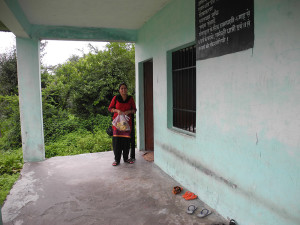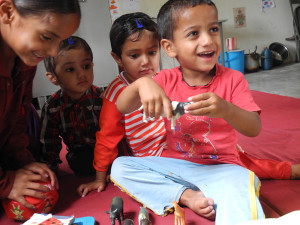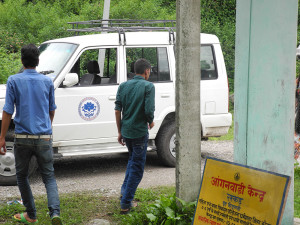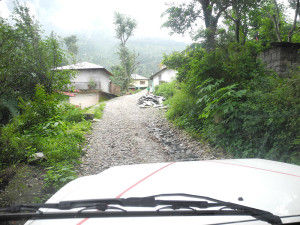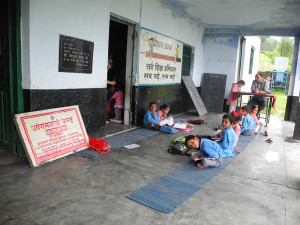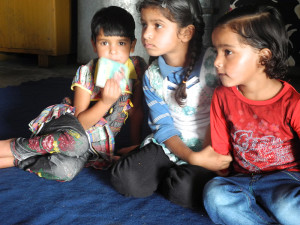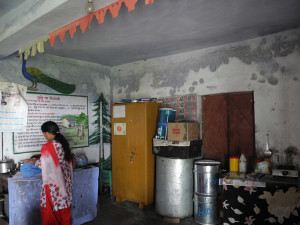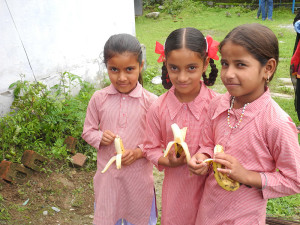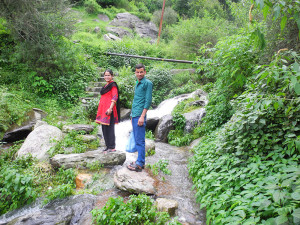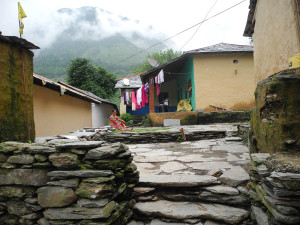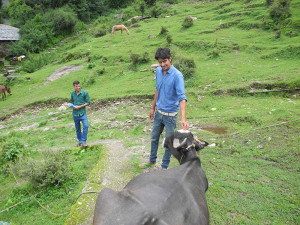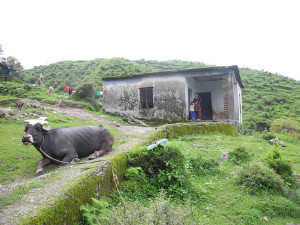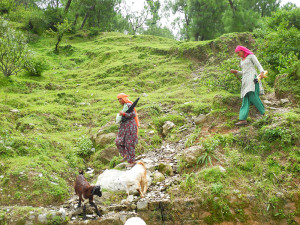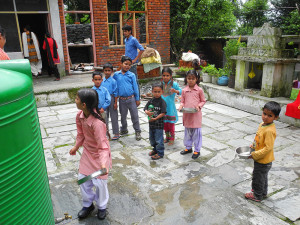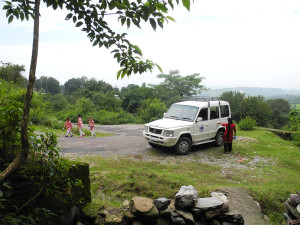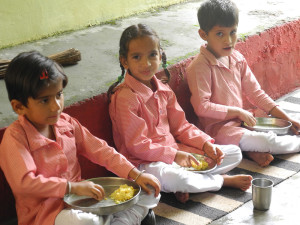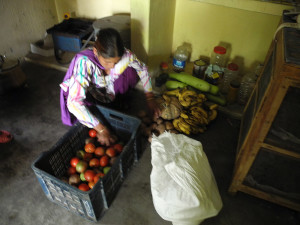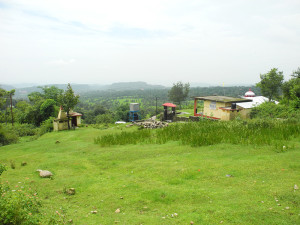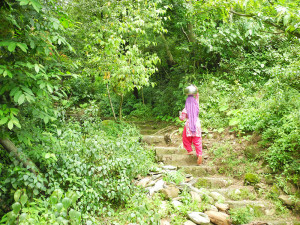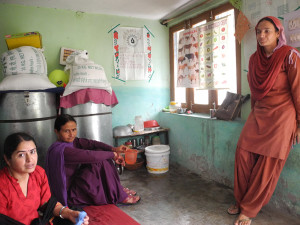by Philippa Russell
Nishtha helps 3 schools and 6 small baby crèches all run by the government by providing nutritional supplements, infrastructure improvements, clean water, equipment, books and toys and regular visits to support the teachers. On August 3rd, the first day back to school after the summer break, I accompanied our team on their round delivering the fruit and vegetables to familiarise myself with how the programme is running. We have also been asked to help one more very small school so I was keen to visit and meet the teachers.
The day starts out with Ravi and Azad going to the vegetable wholesale market in Dharamsala to buy the supplies for the week. Back in the community centre they weigh and record all the goods and then divide it into bags and crates for each school and anganwari.
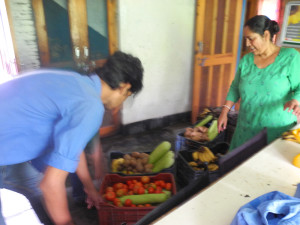
This is Salochana, our community centre helper who helps prepare the bags and crates and Ravi who has come in to load them into the new Sumo jeep, recently donated by the Dalai Lama Trust.
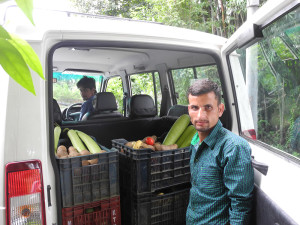
All loaded. This is Arvind who is our new employee who has been engaged to help with the clean village programme as well as as Ravi’s companion on these excursions. He also drives and is famous for cooking excellent samosas so is quite an asset!

Just by the way, here are two men from a local construction site filling their containers with safe drinking water from our filter system.
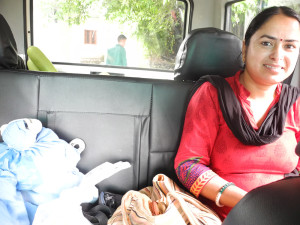
All set to go with Ravindra, our kids programme manager in the back. She uses this weekly visit to check the toy and book boxes and to talk to the teachers and children.
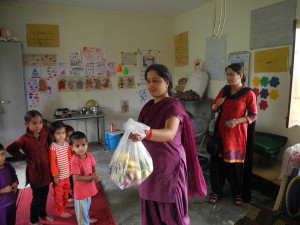
Inside is made bright with drawings on the walls. The anganwaris get enough fruit for the children for 3 days at a time.
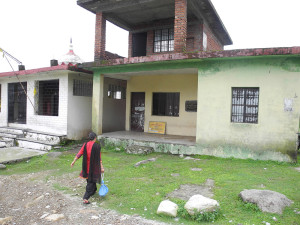
Next stop is up the hill at Nag Mandir Anganwari. This is run by Vishbandu, Arushi’s mother and is usually well attended but is suffering from the monsoon.
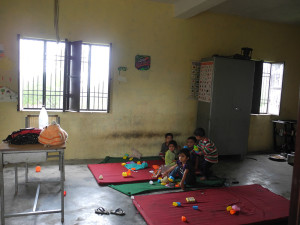
Today it looks particularly bare and damp – lucky the kids have the mats we provided to sit on on that damp floor!

Every anganwari has a teacher and a helper. Here the helper is cooking the meal provided by the government for the children. Today it is wheat porridge with nutri nuggets. Government supplied food is stored and provided for mothers and children from the anganwari so we have also provided good storage boxes for them to prevent it getting spoiled.
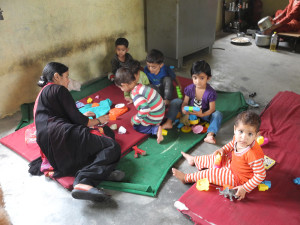
Ravindra spends a little time chatting with the kids who are enjoying their new building blocks. We really need lots more of this kind of toy.

Then they all pose for a picture on the verandha before we continue up the hill to Chatwan School and anganwari.
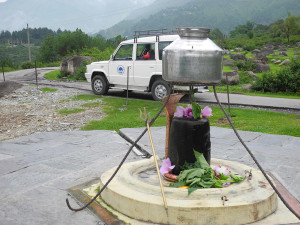
We are in the process of fencing between the temple and the road so the children can safely play outside.
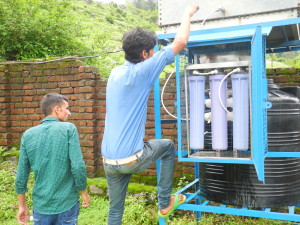
While Ravi and Arvind get on with cleaning and checking the filters. We need an electrician to repair the UV filter which is not working. Having provided new pipes this filter is otherwise working well.
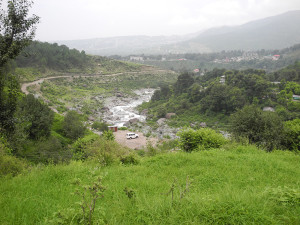
Leaving the car at the bottom of the hill. This road has been conveniently put in by the hydro electric project at the head of the valley.

Where conditions are very simple and the people poor. There is no work for the women here so they lead a very traditional life.

Understandably the parents are worried that it might fall down in heavy rain. This is the condition of the ceiling. They did not even have electricity until we put it in for them.
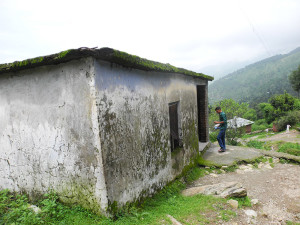
We have lobbied the government and funds have been sanctioned for a new building but there is still paperwork to do. We must see if we can help push it through.
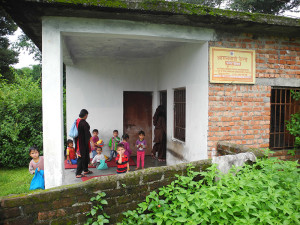
This is the anganwari. Most of families here are very poor, their main income from working in the slate mines. It seems to be quite well attended.
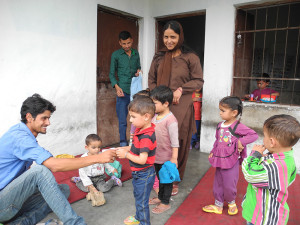
We chat to the children and the teacher and check if there is anything they need. I think they need new covers on those mats!
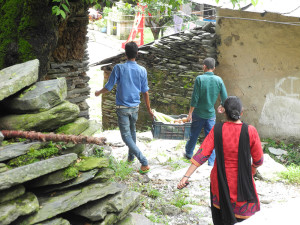
Next stop is the new school at Slategodown – we have already agreed to take them fruit and vegetables but this is our first visit here.

There are only 14 children in this primary school which is housed in a rented room in a local house.
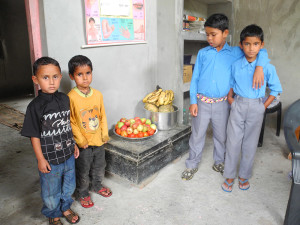
We were made very welcome by the assistant teacher and the children are pretty happy to see that tomorrows lunch will be a bit tastier!
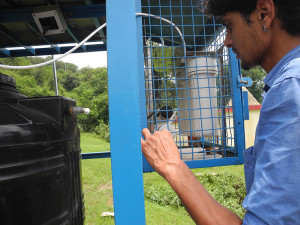
Ravi discovers that the filter pipe has been cut and the tap is missing so we will have to get that fixed.
